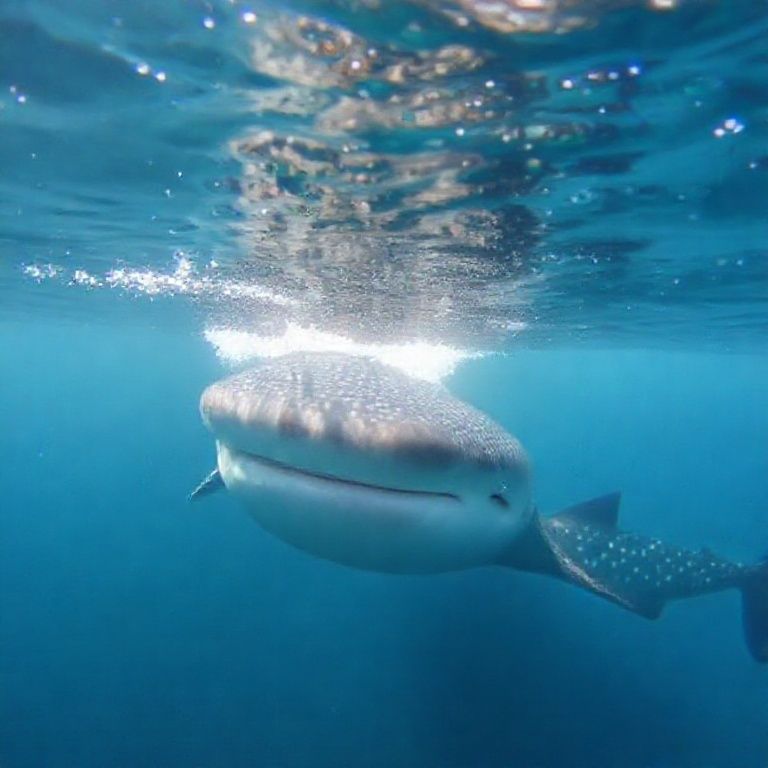Swimming with whale sharks is an unforgettable experience, a true bucket-list adventure for ocean enthusiasts. These gentle giants, despite their massive size, are filter feeders and pose no threat to humans. However, planning your trip to coincide with whale shark season is crucial to ensure you have the best chance of witnessing these magnificent creatures in their natural habitat. So, when is the best time to see whale sharks?
The answer depends on the location you choose to visit. Whale shark seasons vary significantly across different regions of the world. From the turquoise waters of the Yucatan Peninsula to the biodiverse reefs of Western Australia, each location offers a unique window of opportunity to encounter these incredible animals. This article will explore the prime seasons for whale shark sightings in some of the most popular destinations, helping you plan your perfect aquatic adventure.
Yucatan Peninsula, Mexico: A Summer Spectacle
The Yucatan Peninsula in Mexico, particularly around Isla Holbox, Isla Mujeres, and Cancun, is renowned for its abundant whale shark population. The best time to see whale sharks here is during the summer months, from mid-May to mid-September. This is when the plankton blooms attract hundreds of whale sharks to the area, creating an unparalleled opportunity for snorkeling and swimming alongside them.
Why Summer in the Yucatan?
- Plankton Blooms: Warmer waters stimulate plankton growth, the primary food source for whale sharks.
- Concentrated Population: The largest gathering of whale sharks occurs during this period, increasing your chances of a sighting.
- Calm Seas: Generally, the summer months offer calmer sea conditions, making boat trips more comfortable and safer.
Western Australia: Ningaloo Reef’s Annual Migration
Ningaloo Reef in Western Australia is another world-class destination for whale shark encounters. Unlike the Yucatan, the whale shark season here aligns with the Australian autumn and early winter, from March to August. These months coincide with the coral spawning season, which attracts whale sharks to feed on the nutrient-rich waters.
Ningaloo Reef Highlights
- Coral Spawning: Witness the incredible phenomenon of coral spawning, a natural spectacle that draws marine life from all over.
- Diverse Marine Life: Ningaloo Reef is teeming with other marine creatures, including manta rays, dolphins, and humpback whales (during their migration).
- Protected Environment: The reef is a UNESCO World Heritage site, ensuring responsible tourism practices and conservation efforts.
Philippines: Year-Round Encounters
The Philippines offers a unique opportunity to see whale sharks year-round in certain locations, although peak seasons still exist. Donsol Bay in Sorsogon is a popular spot, with the best time for sightings being from November to May. Another location, Oslob in Cebu, controversially offers guaranteed sightings due to feeding practices, but this raises ethical concerns regarding the whale sharks’ natural behavior.
Choosing the Right Location in the Philippines
- Donsol Bay: Offers a more natural and ethical experience, focusing on sustainable tourism.
- Oslob (Cebu): Guarantees sightings but raises ethical questions about altering natural feeding patterns. Consider the impact on the animals’ well-being before choosing this option.
Other Notable Locations and Seasons
While the Yucatan Peninsula, Western Australia, and the Philippines are among the most well-known destinations, other locations offer fantastic whale shark encounters. Consider these options:
- Mozambique: Whale sharks are present year-round, but the best time is from October to March.
- Tanzania (Mafia Island): The season runs from October to March.
- Honduras (Utila): Encounters are most frequent from March to April and August to September.
Planning Your Whale Shark Adventure
When planning your trip, consider the following factors:
- Research: Thoroughly research the specific location you plan to visit, including peak seasons, tour operators, and ethical considerations.
- Book in Advance: Whale shark tours are popular, especially during peak season, so book well in advance to secure your spot.
- Choose Responsible Operators: Select tour operators that adhere to responsible tourism practices, prioritizing the welfare of the whale sharks and their environment. Look for operators certified by reputable organizations.
- Be Prepared: Pack reef-safe sunscreen, a rash guard, a hat, and sunglasses to protect yourself from the sun. If you are prone to seasickness, take appropriate medication.
Conclusion
The best time to see whale sharks depends entirely on your chosen destination. Whether you’re drawn to the summer plankton blooms of the Yucatan, the coral spawning spectacle of Ningaloo Reef, or the year-round opportunities in the Philippines, careful planning and responsible tourism practices are key. By understanding the seasonal patterns and choosing ethical tour operators, you can ensure an unforgettable and sustainable encounter with these magnificent creatures, contributing to their conservation for generations to come.
Ready to make your dream of swimming with whale sharks a reality? Share this article with your fellow adventure seekers and start planning your unforgettable trip today!
IMAGE: A breathtaking underwater shot of a whale shark gracefully swimming near the surface in crystal-clear turquoise water. Sunlight streams down, creating shimmering rays that illuminate the whale shark’s distinctive spots. Several snorkelers are visible in the background, maintaining a respectful distance. The mood is awe-inspiring and peaceful. Shot in a realistic and vibrant style.


